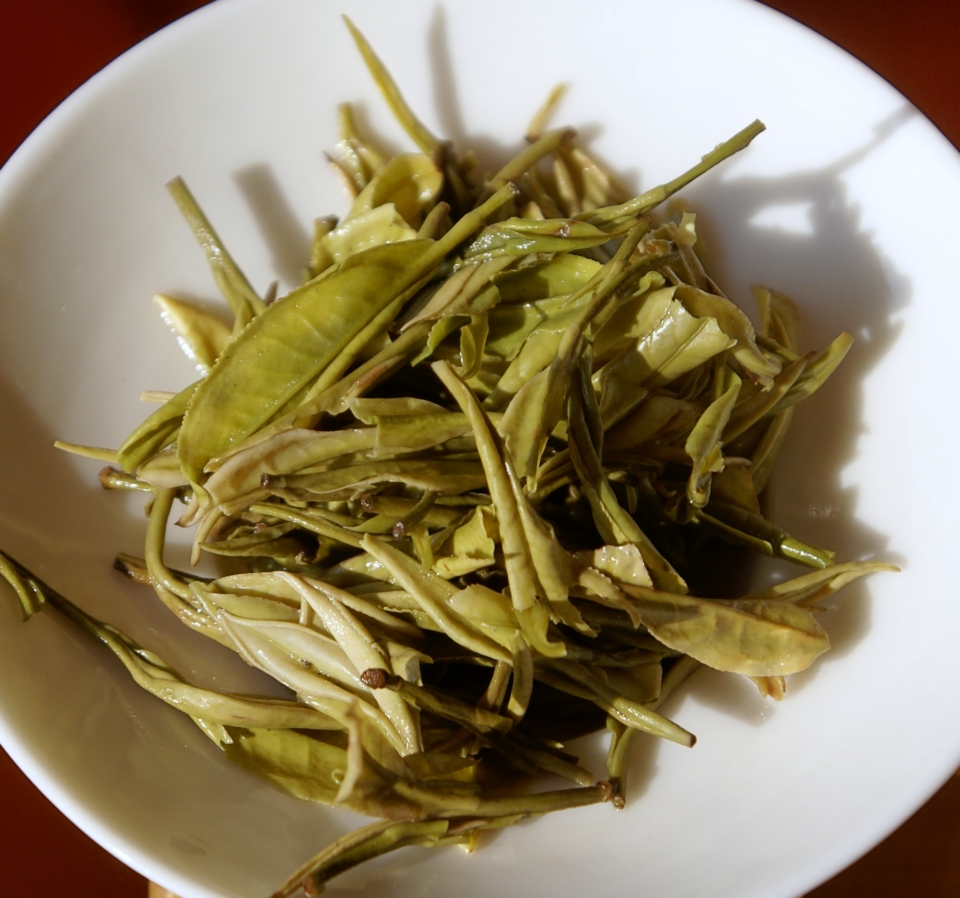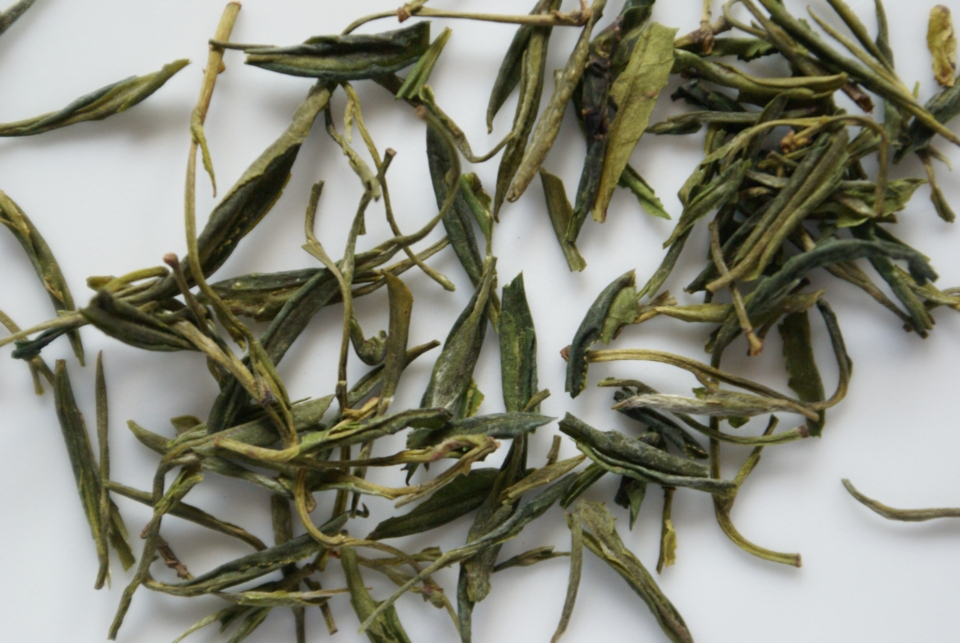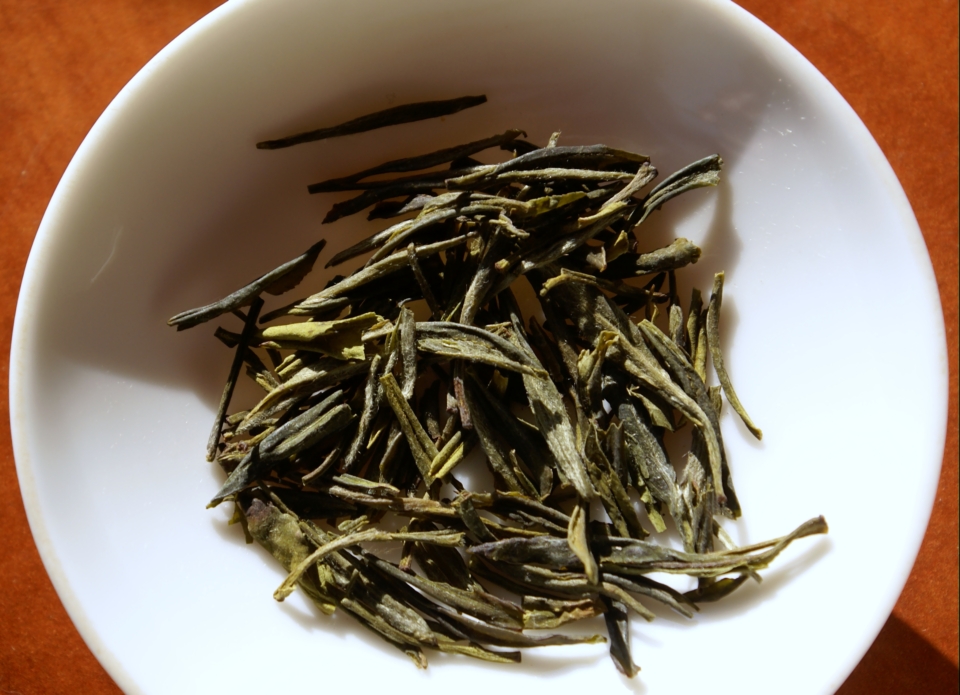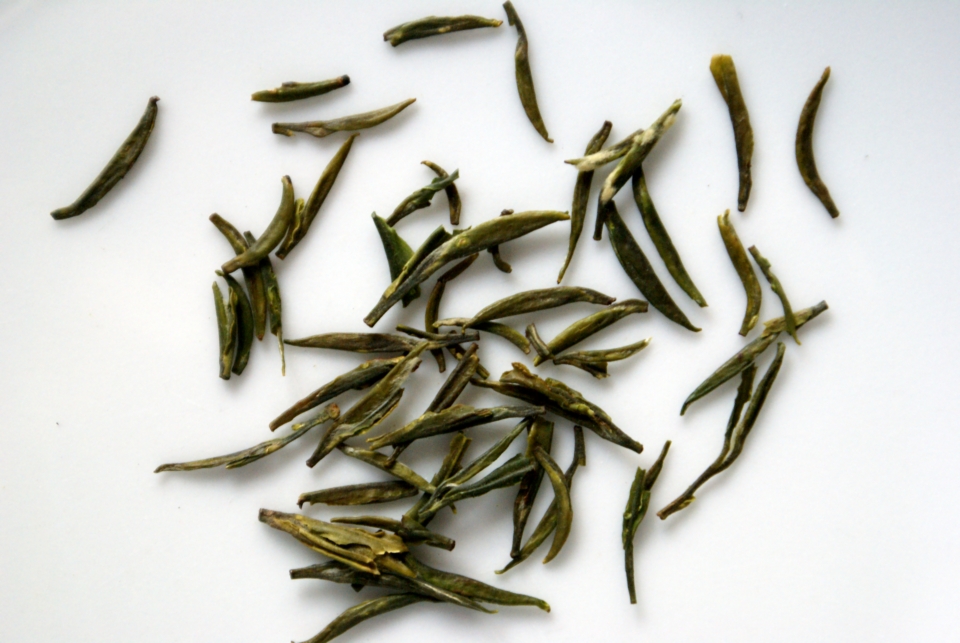Shu Chen Lang Hua et al.
Posted on 27 April 2011
The internet tea interest group I founded in Poland is developing well. One of our members is a tea buff living in Japan (I previously wrote about the Fumio Maeda teas he’s sourced). He also travels to China each year to visit the tea regions during harvest. I received samples of four 2010 chinese greens he’s unearthed. All four were bought from the farmers soon after processing. All are slightly more obscure varieties than the ubiquitous Longjing and Biluochun; I have no background information about them but maybe some of my valued readers will come up with comments.
Li Yang Bai Cha as per its name has small pale whitish-green leaves reminiscent of the famous Anji Baicha. Taste-wise it’s also similar (and Guapian also came to mind) with a very fruity first infusion dominated by sweet melon. But there’s also a herby twist and a more usual green beans bottom note. Unfortunately it’s quite simple and bland from the second infusion onwards (something I find characteristic of these farmers’ teas; they’re never very patient).
My next tea is the Shu Cheng Lan Hua. It’s a more restrained green, less fruity and sweet, with a no-nonsense, bone-dry expression and some tannic throat taste as it’s called in Chinese nomenclature. Not enormously charming but perhaps good with food.
The Yue Xi Cui Lan is another small-leaf tea with high grade and good sorting, though it’s got a slightly whitish discoloration on leaves that testifies to less-than-perfect processing. It’s a simple tea with an interestingly pure fruity flavour: apples and melon. The whole is light with an even, smooth texture. There’s no astringency even at high dosage (which seems to fit this tea well). Simple and rather rustic but nice.
The Jin Tan Que She is the most special of the four. It’s a bud tea, vaguely resembling a Zhuyeqing perhaps. As befits a bud tea it’s light and clean with no enormous power. But the really interesting thing is the intensity of the umami taste. I’ve not encountered it in so much concentration in a Chinese green tea. Umami is coupled with sweetness and fatness and the first brewing is very impressive indeed. (Subsequent ones are much paler). These four teas are rustic peasant fare that might be less consistent than what we buy from internet vendors but the moment of bliss with this Jin Tan Que She shows they’re well worth pursuing.
Disclosure
Source of teas: gift from a tea friend.





